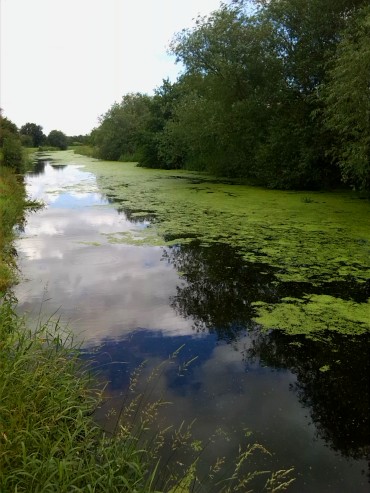 Duckweed can be obviously common on canals and other inland waterways at this time of year. Those with the least traffic are worst effected. The green carpet can spread throughout the canal system aided by good weather. Another contributory factor is agricultural fertilizer in run-off water, so there is often a notable bloom after heavy rain. It is a common problem on the canals, but those with more boat movements fare better. Not being a thick carpet, like floating pennywort, it does not foul the stern gear of boats and barges, but does effect boats using canal water to cool their engines.
Duckweed can be obviously common on canals and other inland waterways at this time of year. Those with the least traffic are worst effected. The green carpet can spread throughout the canal system aided by good weather. Another contributory factor is agricultural fertilizer in run-off water, so there is often a notable bloom after heavy rain. It is a common problem on the canals, but those with more boat movements fare better. Not being a thick carpet, like floating pennywort, it does not foul the stern gear of boats and barges, but does effect boats using canal water to cool their engines.
Covering the water it traps litter and blocks sunlight, making it harder for underwater species to survive. Though harmless to animals, it can easily be mistaken for grass, with particularly dogs attempting to walk on it. Stories of dogs mistaking the surface of canal which are heavily populated with duckweed as terraferma are not uncommon. Unfortunately smaller breeds of dogs can have difficulty climbing from canals unaided.
A less obvious issue for canal craft is the problems it can cause in certain canal basins when mooring. As the individual plants are not tethered they are susceptible to being concentrated by wind movement. This can result in deep covering in a canal basin which in extreme cases makes approaching mooring difficult as the weed creates a cushion between boat and mooring. Various waterway authorities include Inland Drainage Boards in some areas actively control duckweed by surface dredging and depositing the weed in piles on the banks.
{fcomment}